The Last of The "Big Seven" Fraudulent Ivermectin Trials Has Finally Been Published
Oxford's long delayed PRINCIPLE trial just set a new record for ivermectin research fraud when they silently published it as a negative study despite their data showing profoundly positive impacts.
For anyone who has read my book, “The War on Ivermectin”, you may recall Chapter 25 called “Counterfeit Trials - The Big Six,” where I detailed the innumerable manipulations in the design and conduct of the six largest trials on ivermectin (two of them funded and conducted by Big Pharma captured NIH (i.e. ACTIV-6) , and another by Bill Gates and FTX (recall that their former CEO Sam Bankman Fried is currently in jail for fraud and awaiting up to a 100 year sentence).
The others were all carried out by investigators with deep conflicts of interest (COI) with Big Pharma. Know that this fact made the 6 trials unique amongst ivermectin trials - in the other 32 early treatment trials (the near majority highly positive), I could find no investigators who reported COI with Big Pharma.
In that chapter, I mentioned that I could have and should have instead titled it, “The Big Seven” because I knew Oxford’s PRINCIPLE trial was deploying the same tactics as the other 6 trials, never better or more brazenly illustrated than in this below table from the c19early.com research group which compared the inclusion criteria, treatment start, treatment duration, and dosing differences between Oxford’s molnupiravir trial and their ivermectin trial:
The reason why the above table is so powerful is that the two trial designs were by the same Principal Investigator at the same “august” institution. Why such discordant designs? Why did Butler (notice my refusal to call him Professor), when studying ivermectin, use such a low dose on an empty stomach for such a short duration (no other anti-viral is ever used for less than 5 days), so late in the disease (up to 14 days?), in more mildly ill patients?
With molnupiravir, Oxford somehow managed to randomize 25,000 patients at a median of 2 days from first symptoms. This is an insanely impressive trial performance for molnupiravir, in fact, I ask my readers to find one study in the history of clinical trials where 25,000 patients were randomized within 2 days of symptoms of any disease.
Problem: they came nowhere close to that feat in their ivermectin trial (fun fact: despite this feat, they found ZERO benefit with molnupiravir). The superb c19early.com groups take on this difference says it all:
The PANORAMIC trial for molnupiravir and the PRINCIPLE trial for ivermectin provide a good example of extreme bias in trial design. For molnupiravir, investigators randomized 25,000 patients a median of 2 days from onset. For ivermectin, they allow inclusion up to 14 days after onset — a delay incompatible with the recommended use of antiviral treatments, and incompatible with current real-world protocols. This delay alone would normally be more than enough to guarantee a null effect for an early treatment. However, authors also bias the population, treatment dose and duration, treatment administration, and sample size to favor a null result with ivermectin.
Other points taken from the c19early group’s analysis of the trial (a must read):
1) Long delay between registration and enrollment
One participant reports filling out a form for the trial at the time of receiving a positive PCR result and not being called until much later on day 11 of COVID to complete enrollment twitter.com (C). A second participant reports waiting 9 days after online registration to receive an enrollment phone call twitter.com (D), twitter.com (E).”
2) Ability to pickup medication quickly removed from information sheet
Earlier versions of the patient information sheet (e.g., v3.1 c19ivm.org (K)) allowed patients to pickup the medication from a local pharmacy instead of waiting for delivery. This was removed sometime before the ivermectin arm and the sheet now only lists delivery, excluding the possibility of very quick pickup of the medication after enrollment c19ivm.org (L).
If you think that ends their shenanigans in trying to treat patients as late as possible in the disease, the c19early.com detectives found two other juicy tidbits of fraud:
3) Slow delivery
The patient information sheet for molnupiravir states that medication will be delivered by the next day c19ivm.org (H), Gbinigie, while the patient information sheet for ivermectin has deleted "next day" only stating that medication will be delivered c19ivm.org (I).
Despite all the above, they went even further:
4) Trial Schedule Change
As of February 11, 2022, the trial was open intermittently (twice daily between Sunday and Thursday), a change which further decreases the chance of participants receiving relatively early treatment.
Anyway, back to why I did not call the chapter “The Big Seven.” It was only because Oxford was refusing to publish its trial at the time of the book’s publication, despite completing the trial some 14 months prior.
I suspected at the time that they were sitting on a hugely positive trial that they needed to distort, but were instead “laying low” as a result of me and my numerous colleagues around the world who have been trying to call the public’s attention to the immense fraud in the other 6 large trials on ivermectin.
However, they couldn’t lay low forever. Too much money and too much attention had been paid to Oxford and their PRINCIPLE trial.
First question is “How did they manage to explain the immense amount of time between completion and dissemination of the results?”
Answer: Lamely - they made up a pathetic excuse that they needed to complete one year of follow-up of the patients first (a duration that was nowhere in their original study protocol but was instead simply posted on their website, i.e. “gone fishing”). Not so fun fact: their trial on hydroxychloroquine is still not published, despite being completed… 1,380 days ago (umm, that works out to 3.78 years).
One year follow-up for a trial studying a treatment for an acute viral syndrome? In the middle of a viral pandemic which was supposedly a major global public health emergency? Why not publish the early treatment results and then the longer term follow-up later? Whatever.
Further, if they had found ivermectin to be effective (which they did, more on this below), they were morally and professionally and ethically obligated to alert the world immediately. Just as Oxford had done via press release when the analysis of their trial on corticosteroids was completed in June of 2020. At that time, Oxford alerted the world immediately via press release such that corticosteroids became the standard of care overnight (something which me and the FLCCC had earlier advocated for in Senator Ron Johnson’s U.S Senate hearing in early May 2020).
Conversely, if ivermectin was not effective, I am sure Butler would have been overjoyed to please his paymasters by blasting that finding. It simply would have made PRINCIPLE the 7th “Big RCT” which supposedly found that ivermectin was ineffective. It would have served as “the final nail in the coffin” of ivermectin advocates like myself.
So why the silence, secrecy, and delay around making the results of their ivermectin trial more widely known?
My hypothesis (and really the only rationale that makes sense) was that they obtained an immensely positive result for ivermectin and thus they needed a lot more time to “cook the books” (i.e. manipulate the data or its presentation) so that they could conclude ivermectin was ineffective.
Another contributing reason for the long delay was likely due to the amount of attention and controversy around ivermectin at the time they first completed the study, so they instead “laid low” and allowed a huge amount of time and attention on ivermectin to pass before taking the insane actions which I will now describe below.
Here we go:
Two days ago (i.e. 9 months after the invented, tacked-on one year delay), the study “silently” appeared in, get this, The Journal of Infection, i.e. the 7th ranked journal of infectious diseases. Not so fun fact that I just learned from Flavio Cadegiani: the editor in Chief of the Journal, Dr. Robert Read, was also the chair of the Steering Committee for the COV-Boost trial which studied the effects of 7 different mRNA boosters (Astra Zeneca, Moderna, Pfizer, Janssen, Novavax etc).
Anyhoo, the choice of journal is super weird given that the majority of the aforementioned “Big Six” were published in the highest impact journals in the world (i.e. NEJM, JAMA etc) and were preceded and followed by massive, global PR campaigns across the world’s corporate controlled media (CCM) alerting the world that the latest “large, rigorous, high-quality” trial had again found ivermectin to be ineffective. Headlines like these abounded after the Gates/Bankman-Fried TOGETHER trial was published:
Note how the above NY Times article was published exactly one day after the TOGETHER study results were reported. With the PRINCIPLE trial published 6 days ago, the below is what I got when I tried to search for the results of the study using “PRINCIPLE Trial Ivermectin” on Google (note how, beside the result from the journal itself, there is not one mention from any media outlet that the study has been published or what its results were):
Also know that when big studies are published in high-impact medical journals, science journalists are given the results beforehand so they can start writing about the findings and their importance for the day of publication (i.e this is why the NY Times had an article out within a day of the TOGETHER trial).
It gets even more suspicious when you consider that ALL of the studies done on Big Pharma products in Covid had their results trumpeted via press release across corporate controlled media long before the data or manuscript was available to physicians and researchers, (i.e. vaccines, remdesivir, paxlovid, molnupiravir, monoclonal antibodies etc).
OK, so instead we have the PRINCIPLE trial on ivermectin being published without any press release, PR campaign, or even a mention in corporate media that one of the largest trials on ivermectin in Covid by one of the world’s top academic institutions was published or what its results were. It gets worse: the publication and/or its results is not even posted on the PRINCIPLE trial website as of today, March 5th, 2024:
As you can see, only the results for budesonide, doxycycline, azithromycin, and colchicine are listed.
Why is that? The answer to this question is so absurd, it is almost comical.
*Writing this Substack is only one of my jobs, and I put a lot of work into it (at the cost of sleep and personal time). If you like this Substack and get value out of it please consider a paid subscription. Thanks, Pierre
The reason why they are trying to deflect attention from the trial is because PRINCIPLE was a profoundly positive study that was instead analyzed and written up as a negative one. Wait, what? How can that happen?
I maintain that it happens when a study’s findings are “inconvenient” for Big Pharma but the researchers cannot be made to deliberately falsify or manipulate the data (which is a crime I believe). So instead “they” pressure either the authors or journal editors (latter more likely) to ensure the study is instead presented in a “negative” way.
It has happened before on a different therapy that I have worked a lot on with Professor Paul Marik (recall that we originally became colleagues in 2018 based on his pioneering work and landmark study of IV Vitamin C (IVC) in sepsis which later resulted in my deep, shared interest and research in the therapy.
Anyway, at the time, we were shocked when a trial published in JAMA on IV Vitamin C in the disease ARDS (what Covid patients eventually die from) found a large, statistically significant reduction in mortality with IV Vitamin C use (29.8% died on IV Vitamin C compared to 46.3% on placebo which is a massive difference in critical care medicine, like massive). You would think that would have been a headline around the world no? See Table 2 in that paper and note it was a statistically significant result:
Now see the conclusion of the abstract to that paper, where it is not even mentioned:
For the evidence-based medicine purists who say, “ah, but it was a secondary outcome, so it is only hypothesis generating and could have occurred by chance given the number of secondary outcomes, blah blah blah.” That is nonsense. Mortality is not a subjective endpoint, and it is the most important one in medicine. To ensure it is not mentioned in the abstract is a perversion of EBM and reflective of how medical journal editors operate. They cannot threaten the massive market for sepsis/ARDS therapeutics with a safe, cheap, “vitamin” therapy. Period.
So, as you can see above, this ain’t our first rodeo.
Let’s get back to the PRINCIPLE trial. Know that the main outcomes studied were: time to self-reported recovery, rates of hospitalization/death, and long-term outcomes (i.e. symptoms of “Long Covid”).
TIME TO CLINICAL RECOVERY
The authors designed the trial around two co-primary outcomes, the first of which was: Time to Self-Reported Recovery. Most important it that they pre-specified what they felt would have been a “clinically meaningful” result (please remember the words “clinically meaningful”):
What the above means is that if ivermectin treatment would have led to an increase in time to recovery of 1.5 days, then continuing the trial would have been futile. Instead, what they found was that ivermectin led to slightly more than a 2 day quicker recovery! Which would mean that “usual care” would then be futile! Make sense? Look at the result as it appeared in the abstract:
So, they reported a statistically significant, 2 day reduction in the time until you are completely recovered if treated with ivermectin. 2 days!! Despite all the design shenanigans Butler pulled to disfavor ivermectin in his trial! Further, 2 days is a “clinically meaningful” result not only as per their definition but also from a practical sense in terms of missed days at work, quality of life, contagiousness etc.
Further, because of Butler’s use of a low dose, short treatment time, late start in mild patients, this must be viewed as the minimum of what ivermectin can achieve.. and that minimum is 2 days!! A proper trial, started early could have found a 3, 5, or 7 day reduction in time to recovery.
Check out the Forest plots for symptom improvements and note how many were statistically significant (buried in the 400 page appendix):
In their main table of results, look at all the statistically significant findings:
The “probability of superiority” was found to be >.999:
So the conclusion of this study should be that ivermectin use leads to a much faster time to recovery no?
No.
Here is the way they wrote the conclusion in the abstract:
So the authors concluded that this finding was unlikely to provide a clinically meaningful result? What? I want to be brief here, but this is statistical chicanery - to support this statement they instituted an almost impossible bar to clear, that of a “pre-specified hazard ratio level that must be greater than 2.0.” I have never heard of this. A hazard ratio does not need a pre-specified level. If the HR is > 1.0, and it is statistically significant, it is a robust finding. The HR for ivermectin was a statistically significant 1.15! But it was not 2.0, so .. dismiss the result? Whatever.
The level of insane and blatant fraud with this “move” is unparalleled (big thanks to Alex Marinos for help looking into this as I was mystified over this issue). First, Alex pointed out that in their budesonide trial, no “pre-specified HR for “meaningfullness” was used, yet they invented it and tacked it onto the ivermectin results (FYI, I have never before even heard of the statistic “probability of meaningfullness” - clown world).
As you can see from the above, the HR for time to recovery with budesonide was a statistically significant 1.21. Ivermectin’s was a statistically significant 1.15. Even more damning is that nowhere in their trial protocol is there any mention of setting an HR of 2.0 or greater as the requirement for “clinical meaningfulness.”
This statistical invention is what took them 19 months to come up with in order to present ivermectin as ineffective?
Wow. just wow. Another way of saying the above is that they literally designed the statistical threshold for effectiveness in such a way that, even if ivermectin was found to be effective (which they found), if it was not like, am (arbitrary) “super large magnitude” of efficacy, it should not be recommended or thought effective. What?
Let’s call this new trick “moving the goalposts” or “raising the bar” in that, for the first time in my career, I have found a study where the investigators purposely made it insufficient for the medicine to be found superior, and instead necessitated that it be a large magnitude superiority. Otherwise it should be viewed as “clinically meaningless.” And they successfully published this in like, a real journal?
Tell the above to a patient with a straight face. The only thing you need to know is that no such “pre-specified hazard ratio levels” were used for any other PRINCIPLE trial (yet), not even Butler’s molnupiravir trial (which failed to show benefit even without this bar). Also again note how their conclusion detracts from their own budesonide trial where they found budesonide reduced time to sustained recovery by 2.94 days. This is what they wrote in regards to that result:
"Inhaled budesonide improves time to recovery, with a chance of also reducing hospital admissions or deaths (although our results did not meet the superiority threshold), in people with COVID-19 in the community who are at higher risk of complications."
Thought experiment: imagine if these results were instead found for molnupiravir and come up with an example of how the abstract conclusion (and subsequent newspaper headlines) would have been written.
HOSPITALIZATION/MORTALITY
So, what did they find in terms of ivermectin’s ability to reduce rates of hospitalization or death? Here is where it also gets weird. They report both a large magnitude, statistically significant reduction in hospitalization/mortality as well as no difference in hospitalization/mortality. What? See below:
This is footnote “a” in the table:
a These values have not been adjusted for the temporal drift. The usual care group in the primary and secondary analysis populations included participant randomised before the ivermectin arm opened and therefore direct comparisons may reflect temporal differences in the underlying outcome rather than a treatment effect.
So basically, they do not know how to randomize? Why even compare to a non-temporally related population? Who knows but they did, and when they did so, they found a massive reduction in mortality (from 4.4% down to 1.6%, a difference of 2.8%. My “question marks” in the above table refers to the fact that they instead report this difference as 0%. I have to admit I am lost on this one, and have no idea why this is.
Their arithmetic seems to have improved in the bottom row of the table, that of the “concurrent” comparison group, where mortality was 1.6% compared to 1.5%, and the difference reported appears accurate. But also note that suspiciously, they do not provide the data for the “concurrent group.”
I give up. They found a 85% reduction in death for non-concurrent comparison group, and no difference in concurrent. Who knows but I find it strange they don’t show the data between hospitalization vs. death individually and only report the combined outcome. Hiding something? Butler? Never.
REDUCTION IN LONG COVID SYMPTOMS
From c19early.com groups summary of the data from this trial:
Notice how c19early.com group calls this a “late treatment” trial. Also see the bottom rows showing how the ivermectin group does in terms of proportion fully recovered at 3 and 6 and 12 months, as well as those reporting long Covid symptoms. Now, from the paper itself:
Also, see their table of reporting all the time points, note the high degree of statistical significance at each time point:
Also, buried deep within the 400 page appendix, I found lots of data showing improvements in the more debilitating effects of Long Covid. Below I present their data showing a consistent, high degree of statistical significance in lower rates of Long Covid symptoms, but also remember this was a late treatment trial, with a short course of therapy - imagine the differences if a “proper trial” had been done.
Imagine all the millions of Long Covid sufferers when they see these data and realize that so much of their suffering could have been avoided if the (P)FDA and corporate controlled media had not caricatured ivermectin as a horse de-wormer or had hospital and pharmacy systems across the country “outlawed it” nor medical boards had persecuted physicians for prescribing it (I just got a request for another pro bono defense).
Despite these data showing consistent impacts in reducing Long covid symptoms, lets again review the study conclusion:
One thing I have not yet addressed about this “mockery of a sham” trial, is the last sentence. Only in Covid ivermectin trials have I seen policy statements appear within a scientific manuscript, such as in this one where they write: “Further trials of ivermectin in Covid.. appear unwarranted.” Literally gives me chest pain.
The most important thing you need to realize about how damaging that abstract conclusion’s wording is, is that the near entirety of medical doctors are “ARP’s” (abstract reading physicians). ARP’s do not closely scrutinize (or even read) the methods, nor do they independently try to analyze or review the presentation of the data. Instead, when the journal hits the kitchen table, they open to the table of contents, find a study they think interesting or relevant, and then they simply scan the abstract, skimming quickly to the “conclusion” which tells them all they they need to know - i.e. the vaccines are safe and affective, the vaccines are good for pregnant women, HCQ is a dangerous and ineffective drug, ivermectin is a dangerous and ineffective drug, etc.
The abstract is the most powerful weapon Big Pharma wields, and they deployed it masterfully here (or not?)
Lastly, a word on important missing data from the 40 page manuscript and 400 page Appendix:
No data breaking down differences between hospitalization and death rates individually
No adverse event (AE) data aside from a brief mention in the abstract of “severe” AE’s. This is unprecedented for a therapeutic trial. You ALWAYS report adverse events. Was usual care so bad that they were forced to leave this out?
No data on time to treatment start. Probably the most critical piece of data to interpret the trial yet all they gave was “# of days of symptoms prior to randomization” (note that randomization is not the same as treatment because the medicine still had to be shipped - recall that Butler made it so that patients could not pick it up at a pharmacy, nor get it overnight shipped, nor get it on weekends in this trial). What a joke.
I am so exhausted with documenting the massive research fraud committed in order to convince the world that ivermectin is ineffective. With the publication of this last of the large Big Pharma trials on ivermectin, I will not have to do it anymore. But thank God for the c19early.com group as they have not let up one bit in this mission (please support them as well). They, unlike me, appear indefatigable. Their more concise critique of the trial found here is devastating. Reading the litany of research crimes they identified within PRINCIPLE paints a really bleak picture of modern medical science. Below is a snapshot of what they have found so far but reading the explanations for each issue on their site is even more devastating.
Ultimately, as I already argued in my book, I believe the “war on ivermectin” is over. It was fought to a stalemate and pretty much ended in the wake of the devastating horse dewormer PR campaign. The millions of patients and doctors around the world who know how effective and safe of an anti-viral it is will continue to use it for Covid, flu, Disease X and beyond.
However, for the many more millions of doctors who never tried it once due to their believing the flagrant lies of one of history’s most deadly Disinformation campaigns (or who work for system institutions that forbid its use), they will not start using it now (unless Disease X is a truly wicked one and they try it in desperation). Or, somehow this Substack post and/or attention to this travesty of a trial creates a news cycle exposing the mountain of research fraud around ivermectin (ain’t holding my breath on that one).
Either way, I believe the PRINCIPLE trial was no longer needed to fight the War on Ivermectin and that is why they published it so long after the War. It just needed to be published, without a lot of scrutiny or investigation into its fraudulent study tactics. As of today, they have accomplished that.
But, who knows, if enough people send this post around, perhaps we can wake up another section of the world’s citizens to what is really going on in Medicine so that they can make more informed decisions that will save their lives when the next pandemic is launched.
*Writing this Substack is only one of my jobs, and I put a lot of work into it (at the cost of sleep and personal time). If you love this Substack and get value out of it please consider a paid subscription. Thanks, Pierre
Also proud to report that my book has gained Best Seller status on and off in several countries and is climbing up the U.S Amazon rankings, If any of you have bought and read the book, please leave a review on Amazon? Thanks! Link:


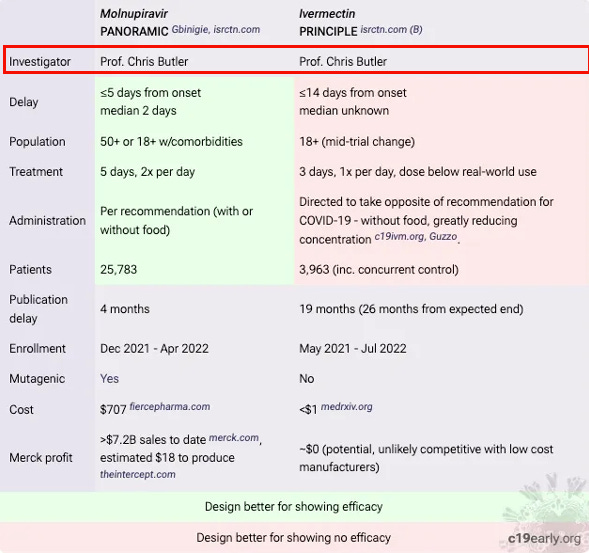
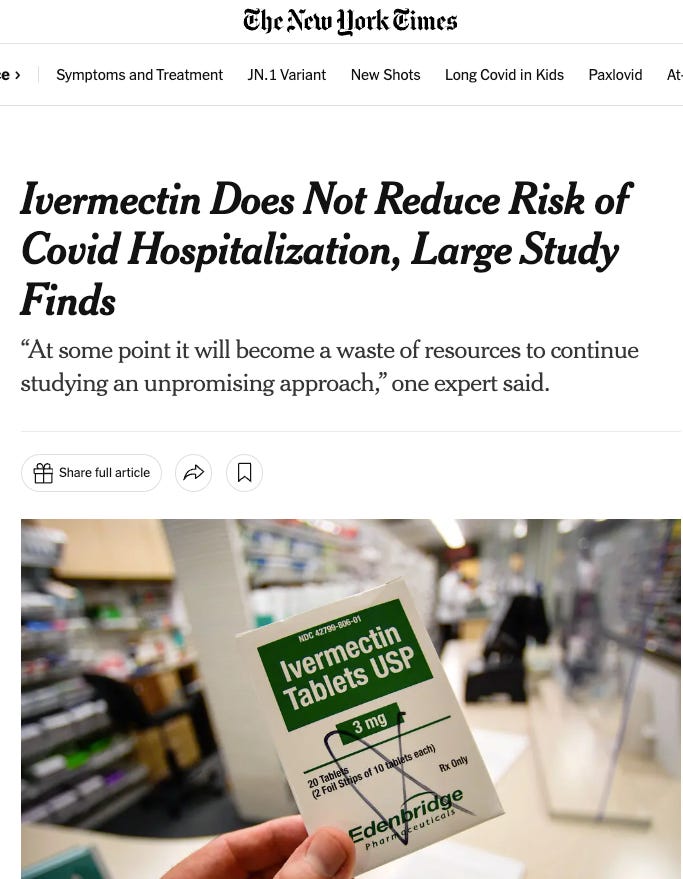
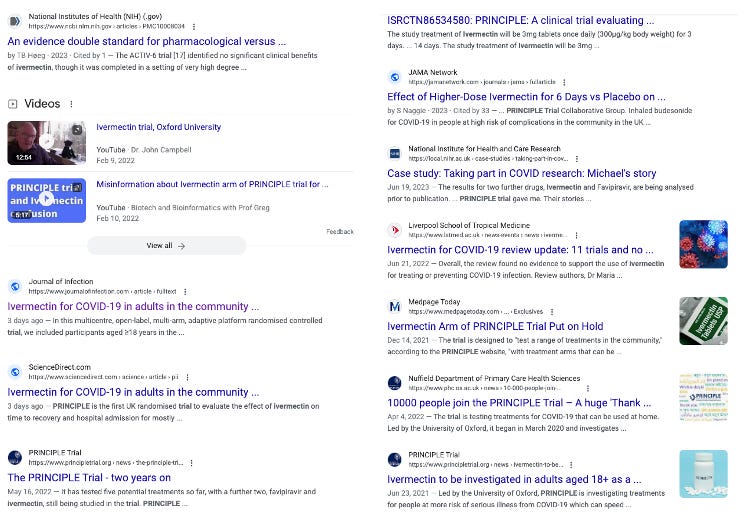
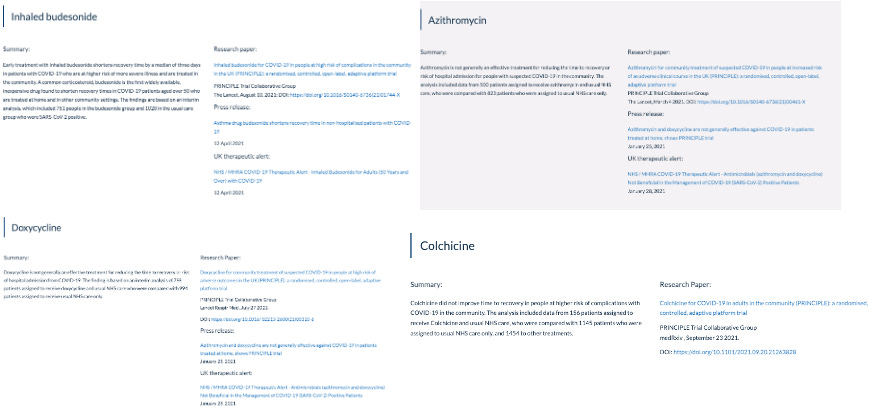
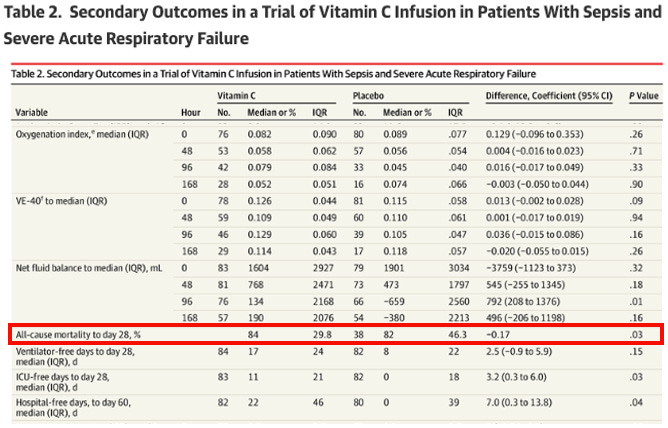


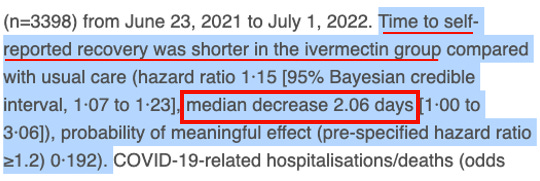
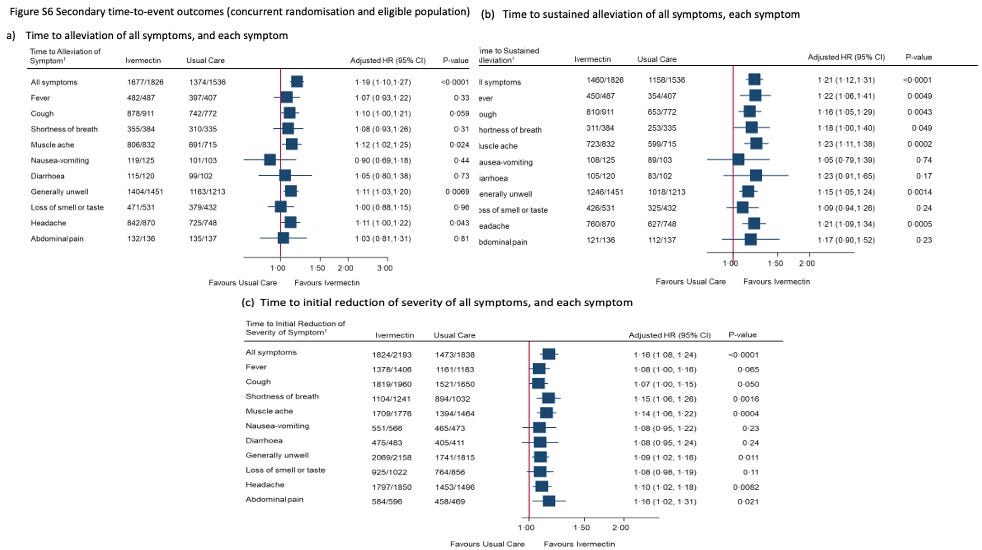
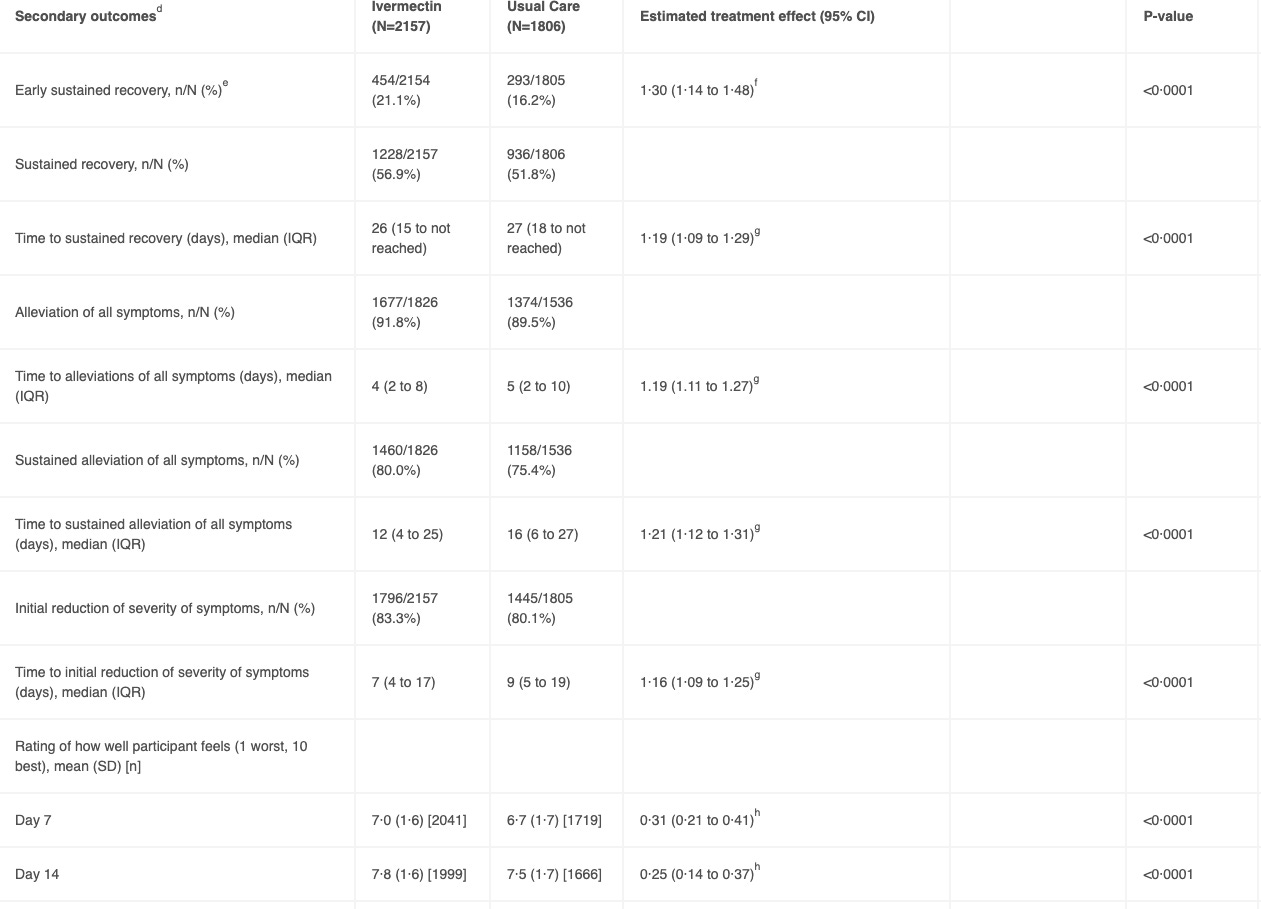

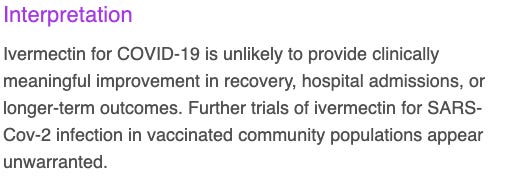
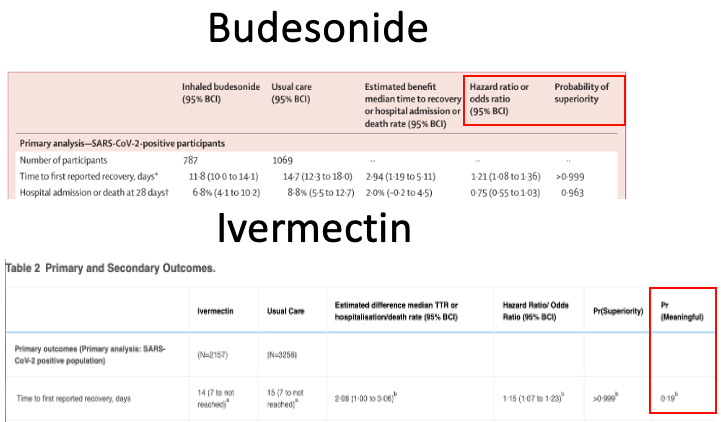
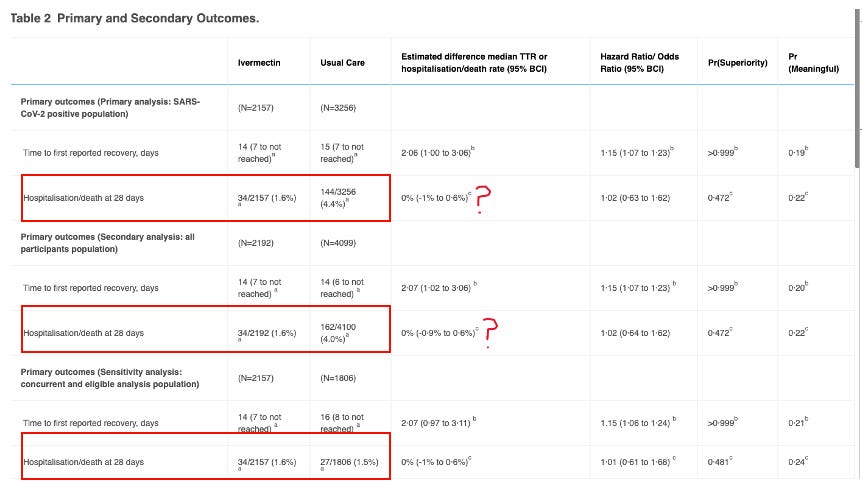
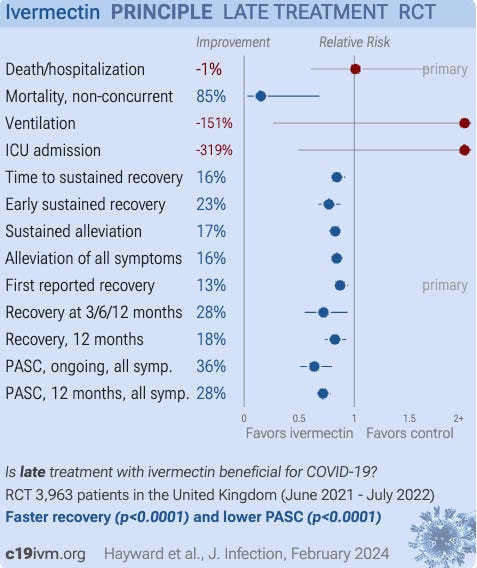

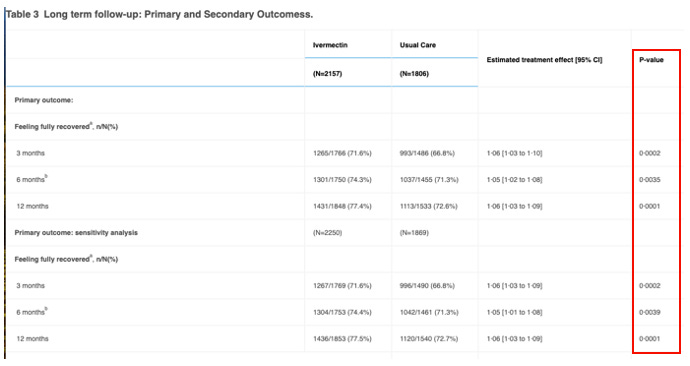
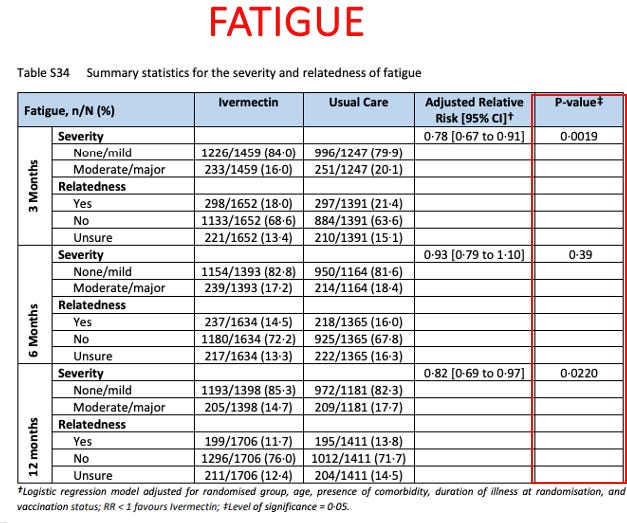
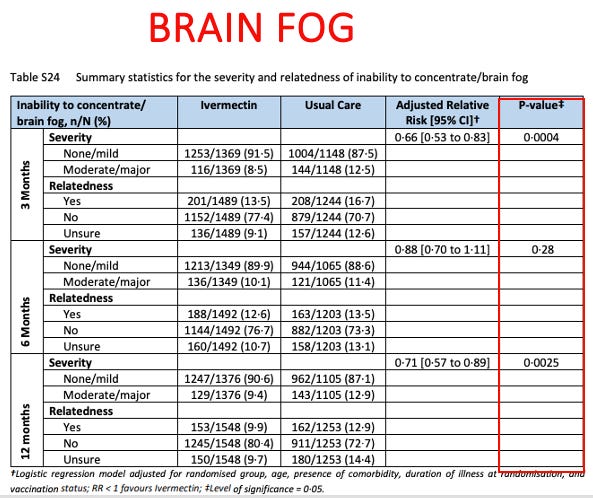
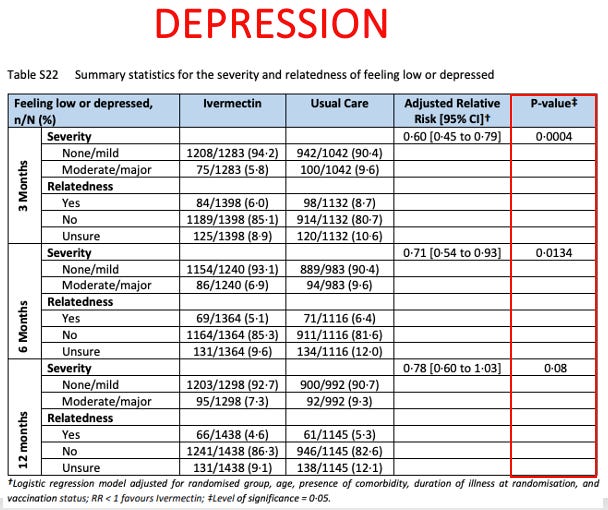
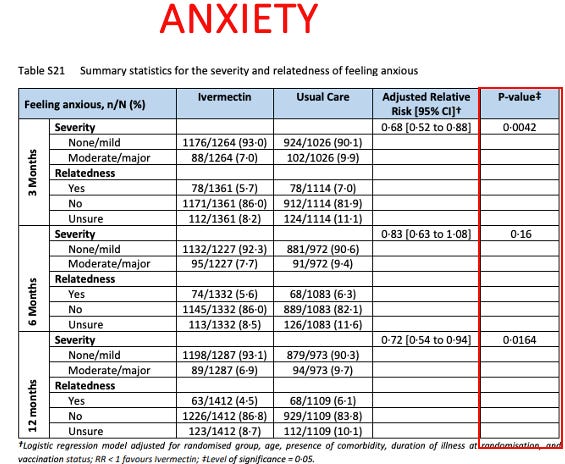
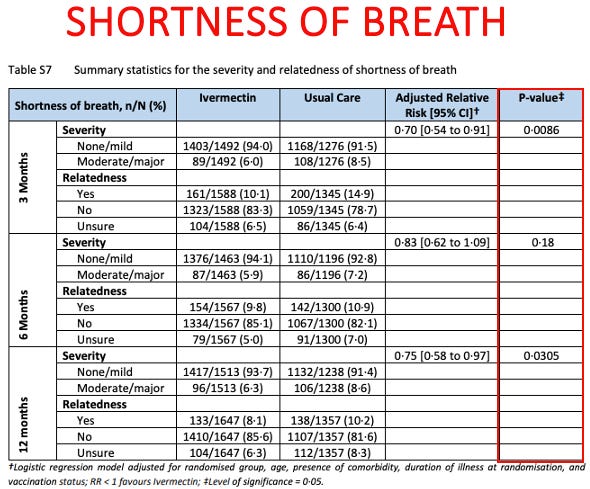
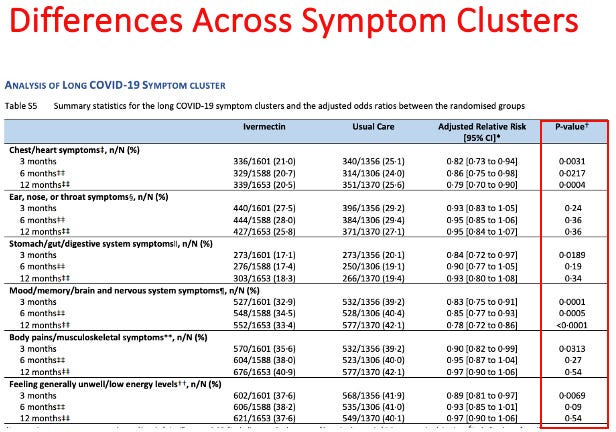
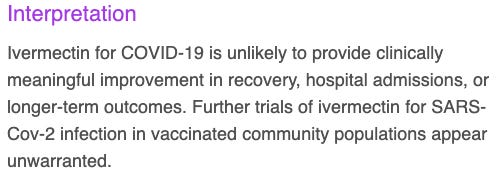
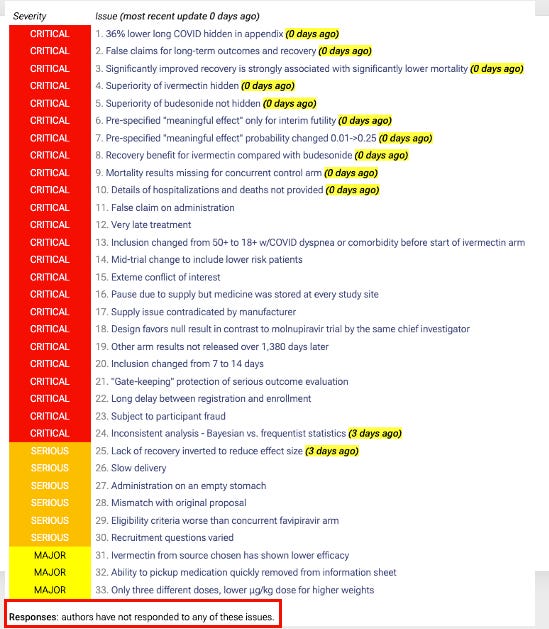
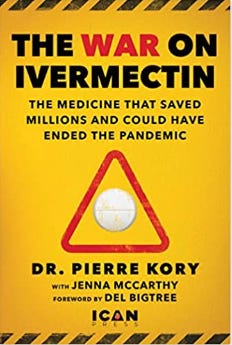
THANK YOU, Dr. Kory, for meticulously digging into all the sordid details, and exposing the very harmful games that are played.
The level of medical publishing fraud has eclipsed even what was present in Marcia Angell's day. I've lost count how many papers show results exactly the opposite of what the authors tout, especially with covid. One author told me that the journal reviewer told him if he wanted his paper published, he need to "massage" the abstract and conclusion/discussion.